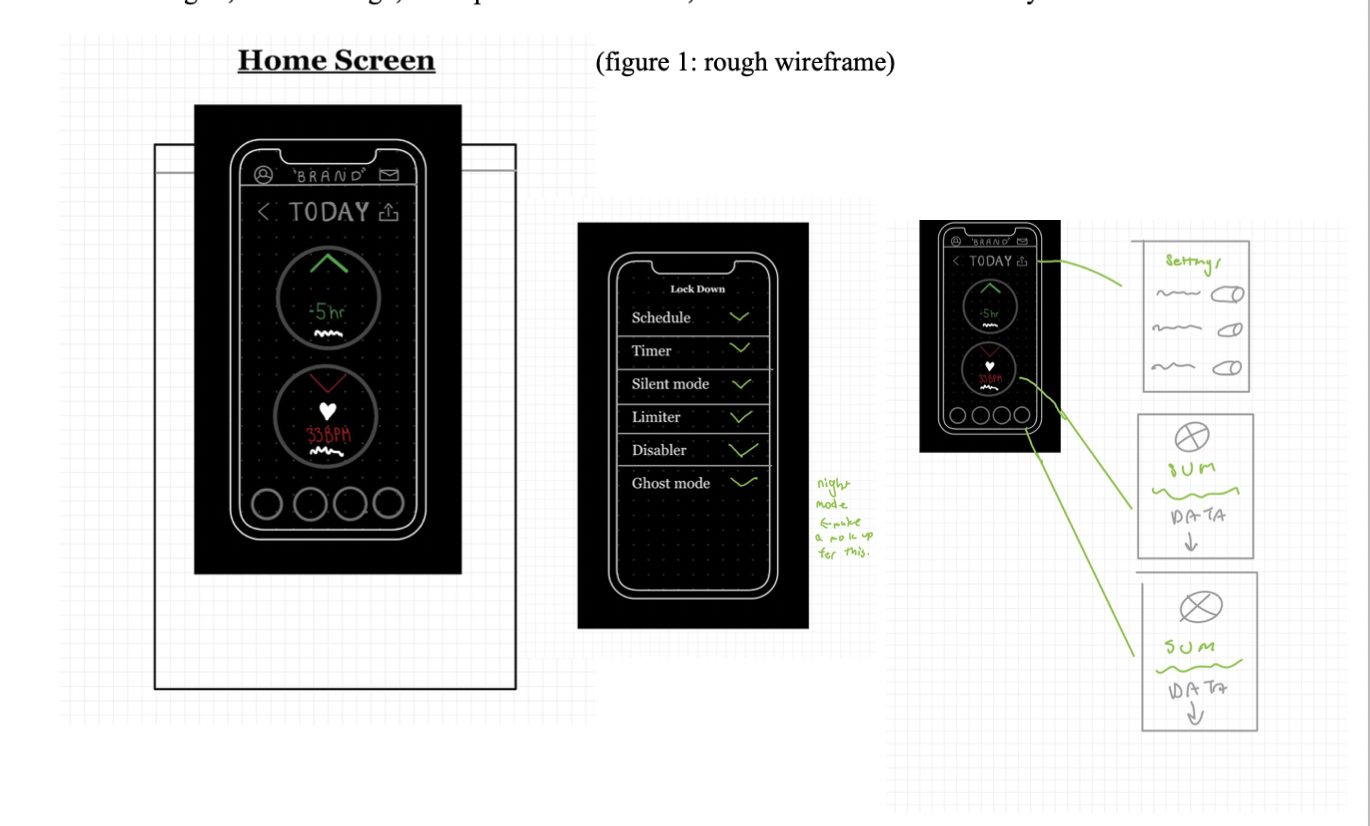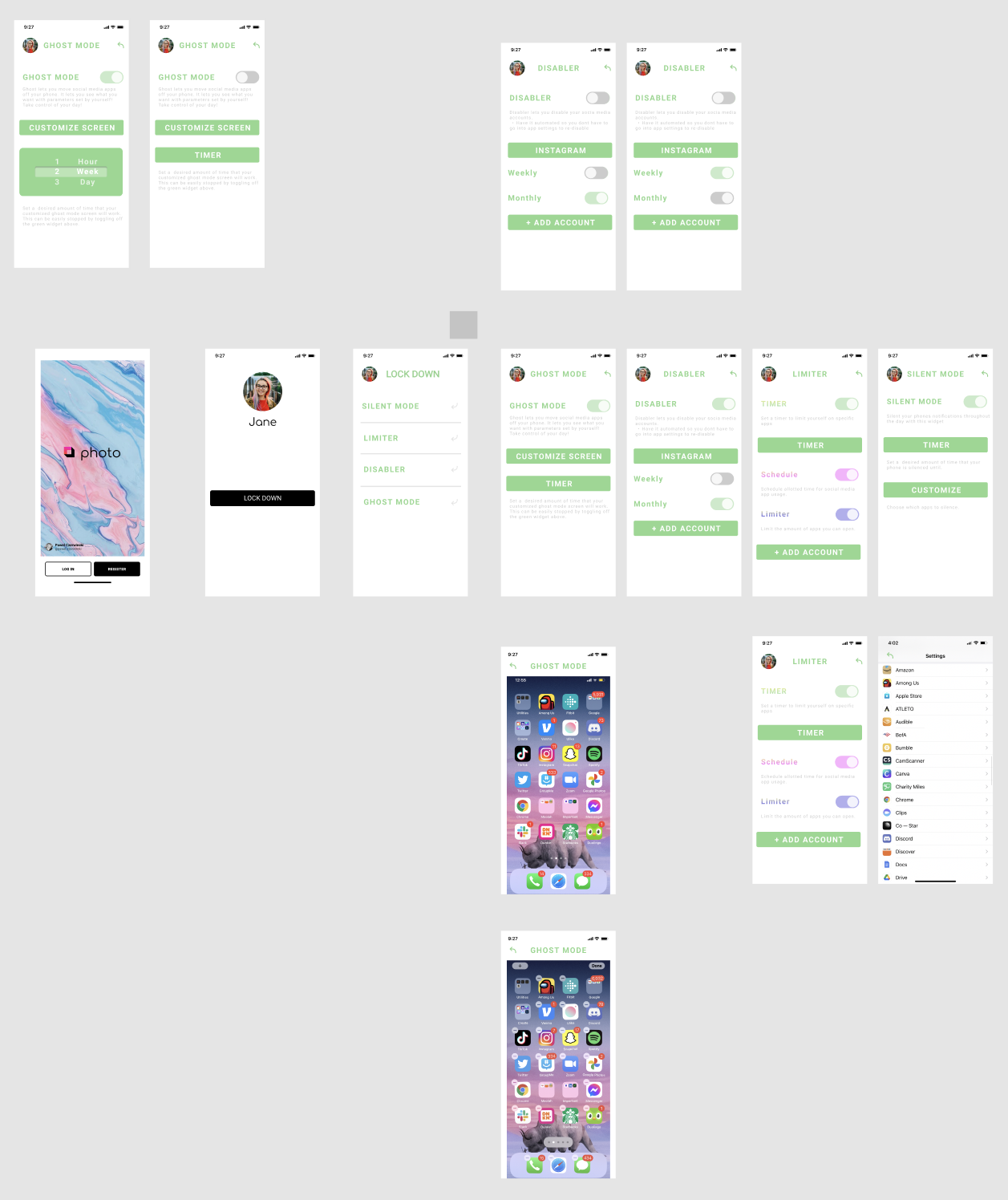
LOCK DOWN
A better relationship with your phone and yourself <3
LOCK DOWN the case study on…
WHY did it Start?
During the pandemic I was addicted to my phone.
I wanted to see how the use of technology directly effected our behavior and mental health.
So—I started an independent study & Prototype with Dr. Kelter on behavioral change.
The Process
Week 1
Performed research on Social media and its effects on mental health. I also explored the governmental research on developing high quality methods to evaluate the impacts of social platforms.
(Click here)
Week 4
From our collective research and individual wireframes, we broke down the features that we wanted to keep in Lock Down.
We also started our formal proposal for our independent study.
Week 2
I conducted a survey on full time college students from 18-24 years of age—the app's target audience. This survey included international students from as far as London, Canada, Mexico, Brasil, Venezuela, and the United States. First they were asked preemptive bias questions, followed by personal information, then more open ended questions.
Week 5
We finished a low fidelity mockup in Figma. Reflecting off of our mockup, we brainstormed questions to ask during our user testing interview.
Week 7
Sabrina and Rachael continued the iterations from the main pages into their sections of the app: Mental Health and Behavioral Changes.
To keep the flow of the design, Mahjusted tweaked the color pallet that he made for Lock Down.
Prototype (click)
Week3
Utilized interdisciplinary research on consumer behavior and the survey data, and my initial research on global phone usage.
Contrasting preemptive thoughts, internalizations, and phone usage prequarantine & quarantine; I found the psychological elements, design elements, and defined the problem.
Week 6
At this point, we questioned the functionality of our app and if we should keep the current trajectory. We also questioned our design of the application. We sprinted many designs and iterations of the main pages.
Week 8
Due to Independent Study semesterly time restraints, the team reviewed our revised mockup of Lock Down. Because of semesterly and TCNJ restraints, we projected what we could have done if we were alloted more time to finish our prototype.
The team drafted our independent study proposal as our final goodbye.
The Psychology
“How do you hold someone accountable?”
Call them a Hypocrite.
Based on research from “Hypocrisy and the Usage of Condoms” to “Moral Credentials & Prejudice”, people will self transcend to reaffirm their self image. By having users license their degree of screen-time in a semi public way, you can shift their attitude with behavior relevant information and data.
The survey measured intrinsic perspectives. Before revealing screen time statistics, users were asked questions like these ——>
Most users are aware of …
the time they spend on their phones and what they spend it on
the average screen-time for their peers
Most users report mental health concerns and believe it is directly correlated with screen-time on social media
The motivational curve of their system 1 way of thinking makes it harder to resist temptation of the phone unless self transcendental motivation is involved
The solution used here is the hypocritical licensing effect.
The Findings
User problem: Spending too much time on social media, affecting their day to day lives. The tick of ‘checking the phone’ exponentially increases screen time.
Solutions
The Ideation
✤ Schedule allotted time for social media usage
✤ Put your phone on silent mode
✤ Limit the amount of apps you can open
✤ Move social media apps off your home screen with a toggle
✤ Set a timer to limit yourself on specific apps
✤ Temporarily disable your social media account
✤ Have it automated each week so you don't have to go back into instagram to re-disable
✤ Rewards: Have the app generate behavioral relevant info on their improvements, failures, and benchmark statistics
Iterations
Meet the team ʕ·ᴥ·ʔっ
Sabrina May
I proposed the idea to Professor Kel and asked him to be my advisor for this independent study. From there I began Lockdown as a TCNJ Independent Study under the department of Design & Creative Technology.
I took my research on college students from multiple countries during the pandemic and their behavioral relationship with their phones and social media. With these findings I designed the behavioral change features on Lockdown and tied it with the Mental Health features.
Rebecca Jalowics
Rebecca and I bonded over several zoom calls discussing how ironic it would be to have an app to get you off the apps.
We agreed that Lockdown would have two components: the mental health and the behavioral change features.
Rebecca decided to focus on the Mental Health UX design and helped to organize our weekly meetings.
Mahjustice Murphy
Mahjustice had joined the project with interest in the visual and graphic design of the application. He was tasked with expressing his artistic abilities to help our application flow more aesthetically.
He made a color board and some icons for Lock Down.











